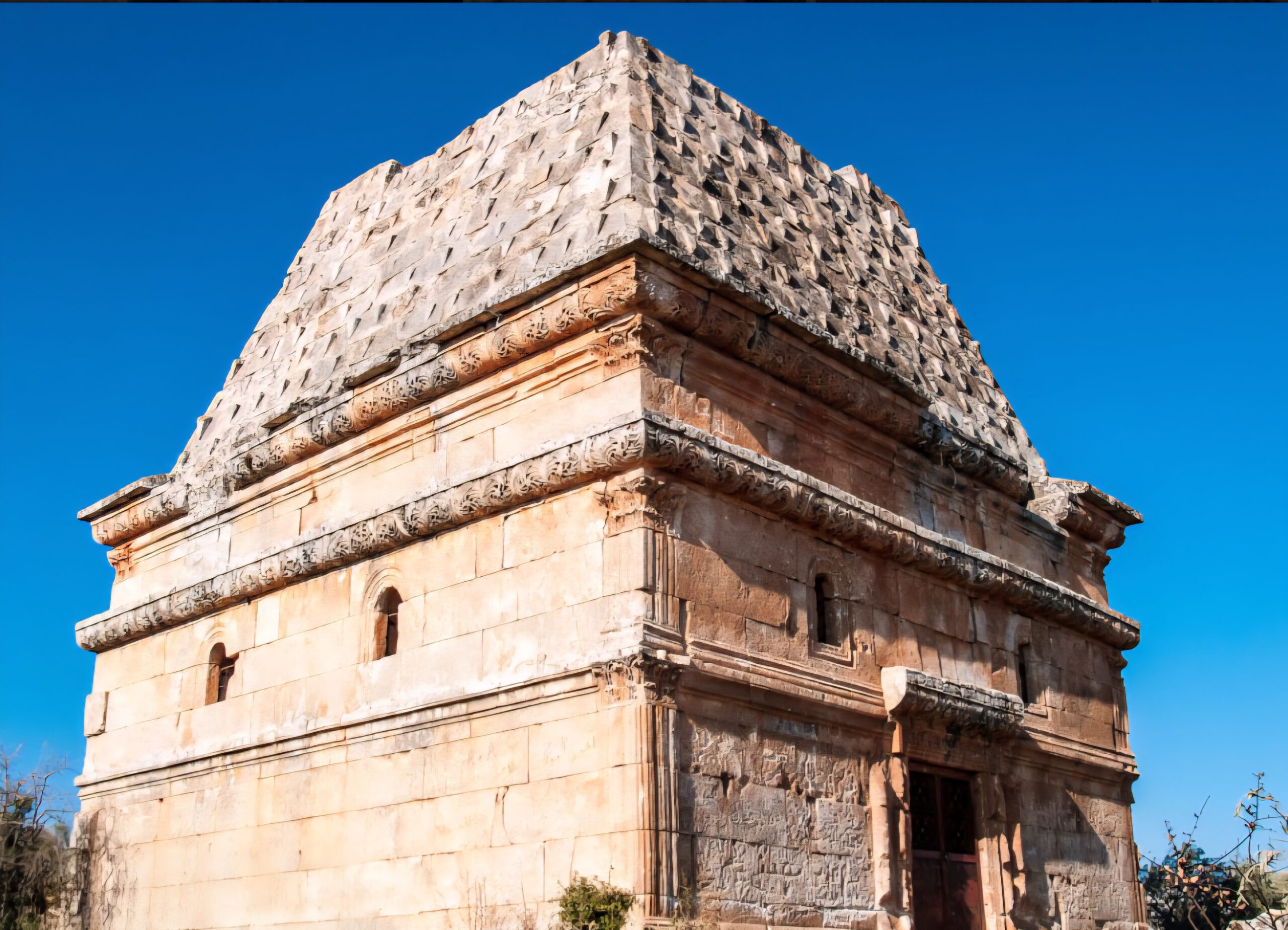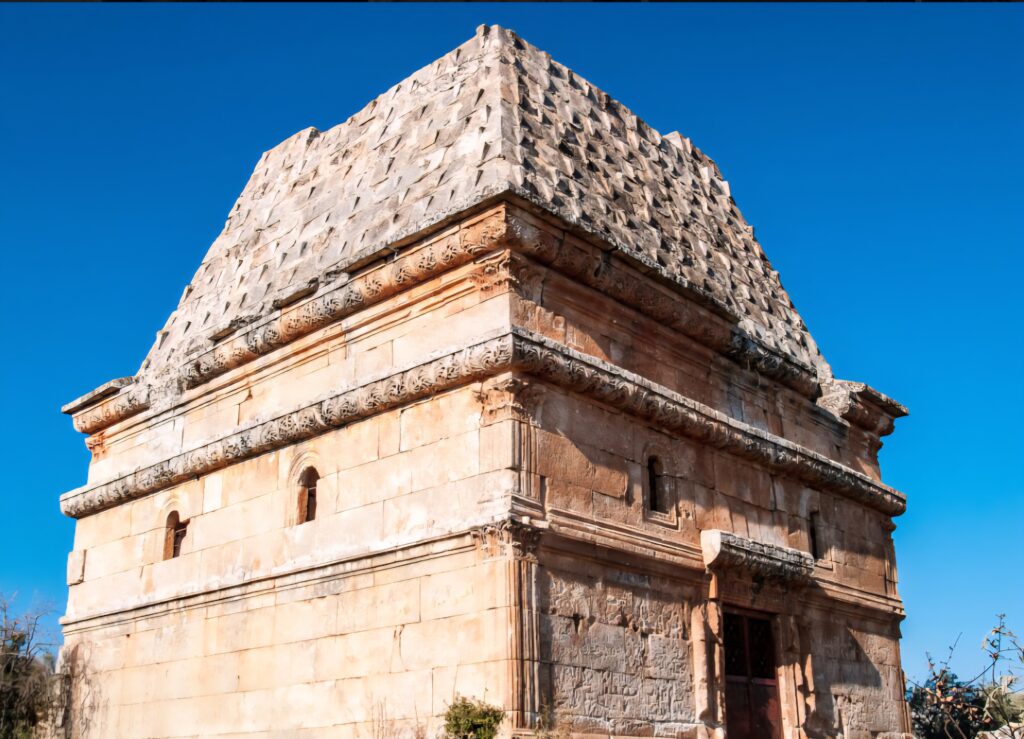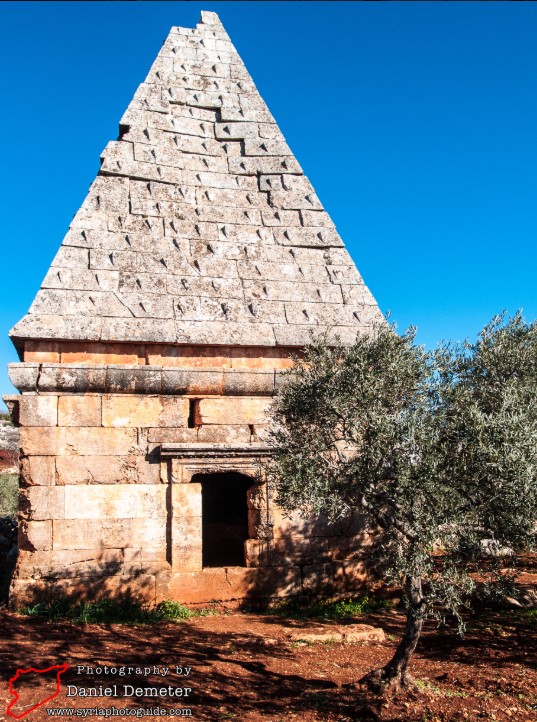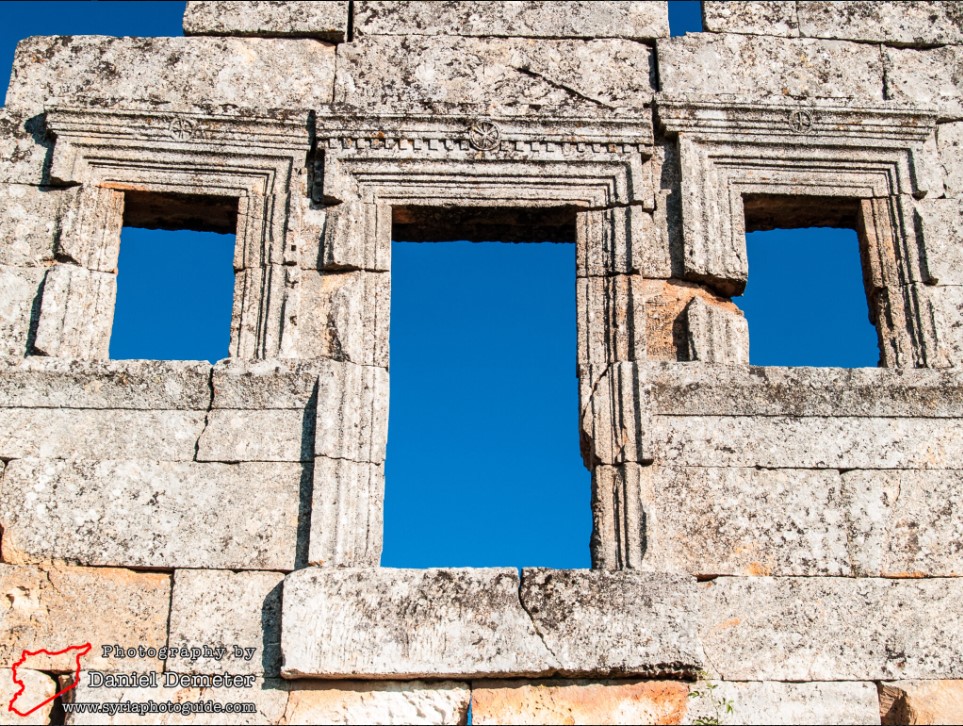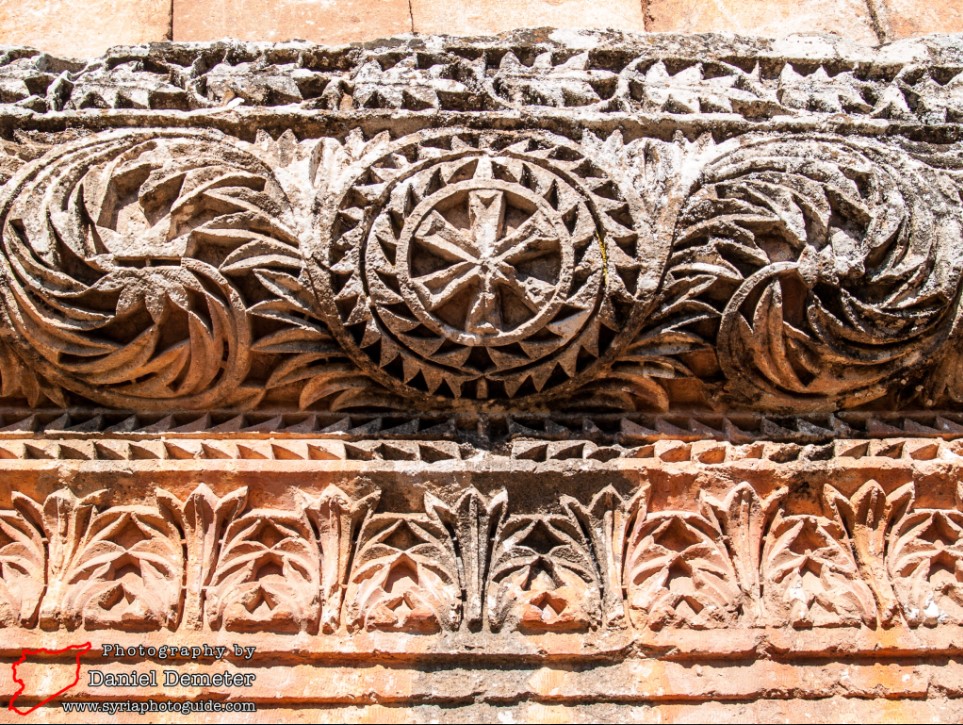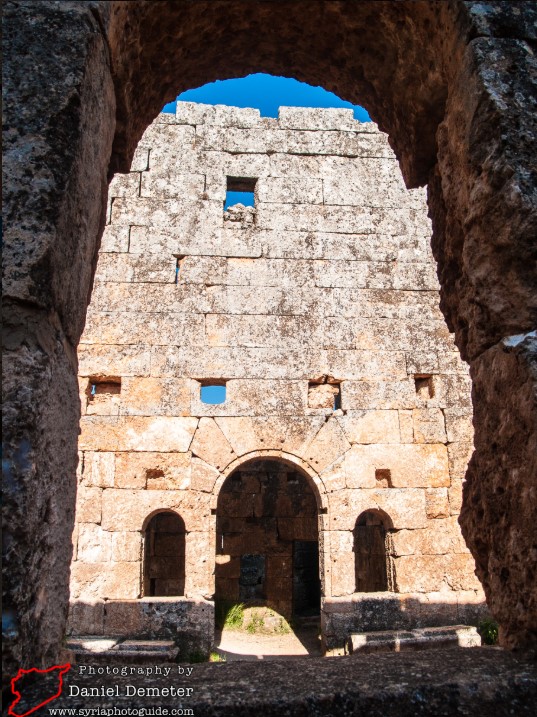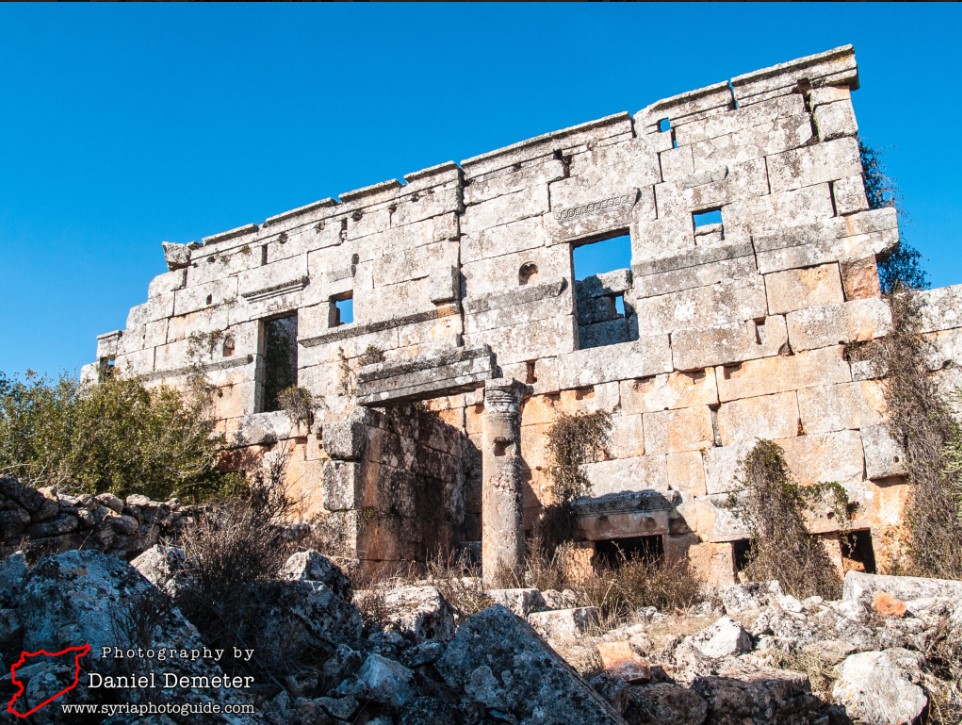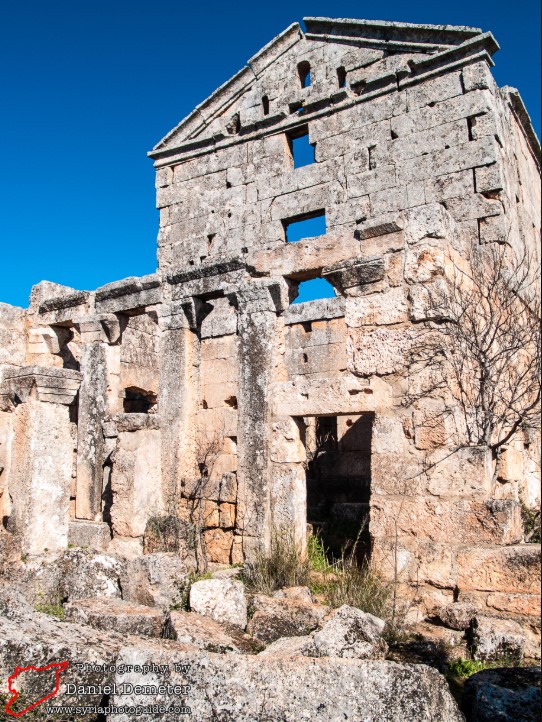The ruins of Bara scatter across the slopes of Mount Zawiya, marking it as one of the largest dead cities in Syria. Founded by rural landowners in the fifth century AD, it emerged following Byzantine settlement in the area. Its strategic location served as the sole route between Apamea and Antioch, and the abundance of water springs and limestone was exploited to construct massive olive oil presses, consisting of grinding stones and collection basins, making Bara’s oil highly sought after in Antioch.
The village of Bara is renowned for its rich decorations that adorn churches, homes, presses, and tombs. It is divided into a southern neighborhood and a western neighborhood, with the southern area containing numerous tombs dating back to the fifth and sixth centuries AD. The western neighborhood features luxurious two-story houses along with five churches, the largest being the northern basilica (the fortress), which was built on the ruins of a pagan temple dating back to the fourth century AD, alongside several monasteries.
The Mosaic Palace is considered one of Bara’s most famous landmarks, with its floor adorned with cluster motifs representing the essence of fertility, in addition to three pyramidal tombs bearing Greek inscriptions that indicate the status of the agricultural elite in the region.

